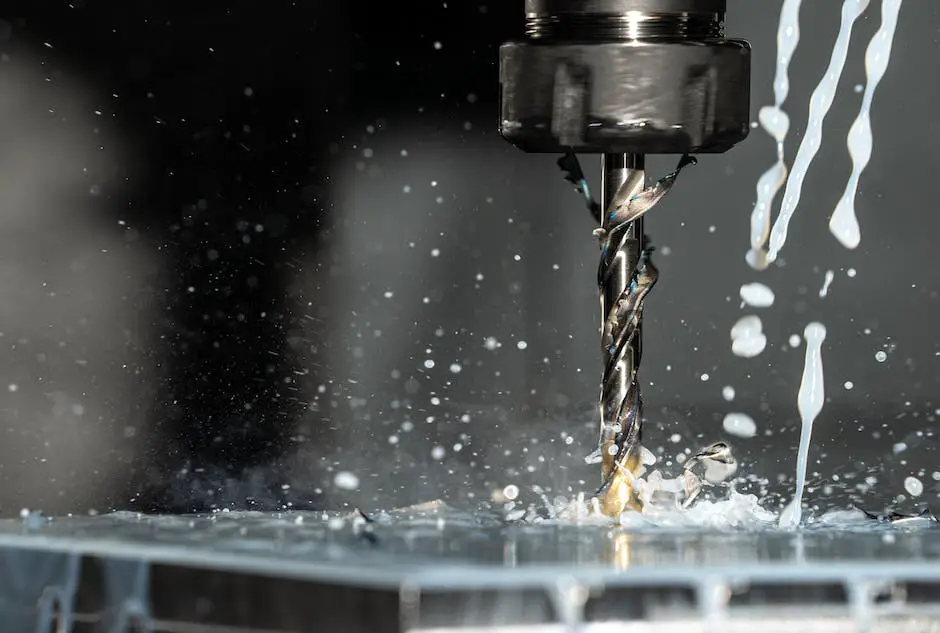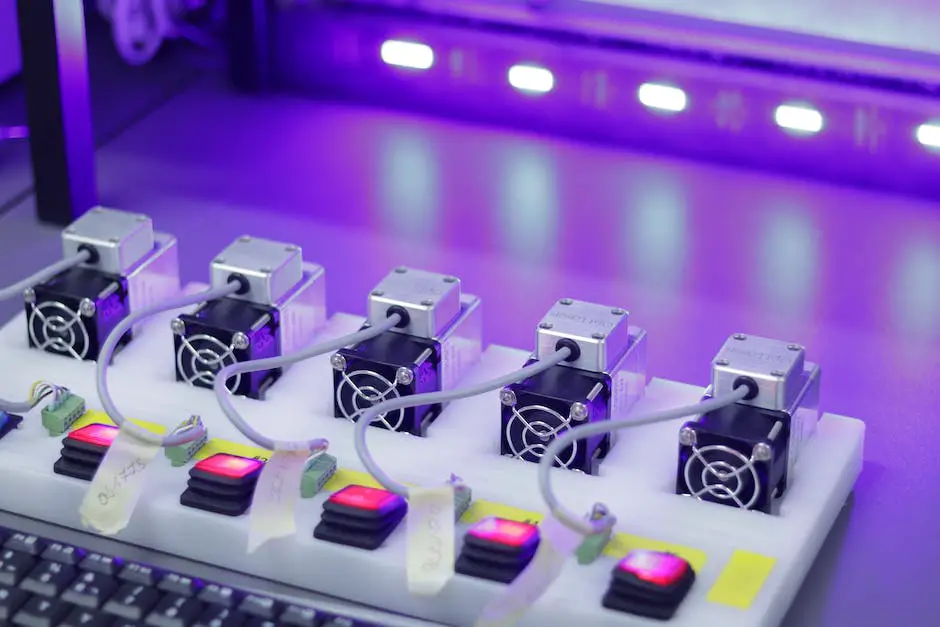
In an era where the manufacturing industry is witnessing significant technological transformations, CNC machining has emerged at the forefront, revolutionizing the sector with precise, efficient, and more automated processes. However, this advancement is not without its pitfalls. The increased integration of technology in CNC machining opens up a vast landscape of potential vulnerabilities, making it a prime target for cyber threats, hence establishing, unequivocally, the importance of cybersecurity in this context. This discussion traverses the link between modern CNC machining and cybersecurity, uncovering potential cyber threats, examining measures to fortify cybersecurity, and peering into the future of cybersecurity in this dynamic industry.
Key Takeaways are:
- CNC machining has revolutionized the manufacturing industry with precise, efficient, and automated processes.
- The increased integration of technology in CNC machining has made it vulnerable to cyber threats, highlighting the importance of cybersecurity.
- Potential cyber threats in CNC machining include ransomware, data breaches, DDoS attacks, and system manipulation.
- Robust cybersecurity measures, such as AI-based threat detection, encryption, and IoT-centric strategies, are necessary to mitigate these threats.
- The future of CNC machining and cybersecurity requires the adoption of machine learning, new standards for device configuration and password usage, and incident response strategies.
- A culture of cyber vigilance and continuous education is crucial in maintaining cybersecurity in the CNC machining industry.
The Link Between Modern CNC Machining and Cybersecurity
Title: The Dynamic Between Modern CNC Machining and Cybersecurity in Shaping the Manufacturing Industry
Today’s manufacturing industry undergoes constant evolution, driven by technology innovation and digital transformation. The interplay of modern Computer Numerical Control (CNC) machining and cybersecurity is creating revolutionary shifts, shaping industry practices, and inherently redesigning production systems.
CNC machining is one of those game-changing technologies that has made a vital impact on the way commercial goods are produced. By utilizing pre-programmed software to control the movements of factory tools and machinery, precision, speed, and efficiency have been brought to new gem-like highs. It is a bedrock upon which the industry leans for mechanical precision and expeditious production cycles.
However, along with progress comes risk. The increased connectivity and digitization of manufacturing systems exposed them to the growing storm of cybersecurity threats. It’s a shift that rightfully demands attention as CNC systems, largely tied into internet-connected networks, are now prone to cyber vulnerabilities. Take, for example, a malicious actor gaining unauthorized access to the control software of a CNC machine. The implications could be costly, ranging from sabotaged operations, and compromised worker safety to economic disruption.
Strengthening Cybersecurity Measures in CNC Machining
To conquer these, manufacturers must put cybersecurity at the forefront. The infiltration of Industry 4.0 (the Fourth Industrial Revolution) has prompted the convergence of IT (Information Technology) and OT (Operational Technology). Hence, there is a need for a multi-layered defense approach, instating cybersecurity measures at each level – from protecting the integrity of CAD files to securing CNC command communications.
Several solutions are endorsed within the industry. Employing firewalls, VPNs, and intrusion detection/prevention systems can create a robust cybersecurity infrastructure. Equally paramount is the focus on personnel training about potential phishing and socially engineered attacks. It is also highly recommended for manufacturers to join hands with third-party cybersecurity experts in order to ensure comprehensive risk assessment and mitigation strategy development.
Indeed, digital sophistication has its drawbacks, one of them being the mounting cybersecurity risks along with tech-driven enhancements. Yet, the complex interplay between modern CNC machining and cybersecurity loudens the fact that embracing advancements does not imply disregarding security. In fact, they are two sides of the same coin that industries ought to pay attention to manage risk and advance forward.
Therefore, the nexus of CNC machining and cybersecurity is not just shaping the manufacturing industry—it is redefining it. Firms that can successfully navigate this path—balancing the benefits of advanced machining with sound cybersecurity practices—will be the ones to set the pace for the future of manufacturing. The question for forward-looking manufacturers now is not ‘if’ but ‘how’ to incorporate this delicate balance into their business strategy.

Potential Cyber Threats in CNC Machining
Unveiling Cyber Threats in the Modern CNC Machining World, A Risk-Laden Construct for the Manufacturing Industry
Modern CNC machining has altered the landscape of the manufacturing industry, providing unrivaled precision, speed, and flexibility. However, with these advancements come significant cyber threats that could undermine the integrity and operational efficiency of this sector.
One insidious threat is ransomware, a specific type of malware designed to encrypt critical data rendering the system inoperable. For CNC machining, a successful ransomware attack could put an entire production line on hold, culminating in losses upward of millions of dollars due to downtime coupled with the hefty ransom demand.
In a similar vein, data breaches represent a significant risk. CNC machines crucial to modern manufacturing processes store a wealth of proprietary information, including design parameters and production protocols. Cybercriminals could, by infiltrating these systems, steal and auction off or exploit this data, consequently leading to substantial financial and reputational damages.
Moreover, the essence of CNC machining lies in their interoperability and seamless integration within the Internet of Things (IoT) ecosystem. However, this exposes an enlarged attack surface for Distributed Denial of Service (DDoS) attacks. These attacks can overload the network with traffic flow, leading to network paralysis and production cessation.
Another underreported but potential threat lies in sabotage through system manipulation. Here, cybercriminals could reprogram machinery remotely to produce faulty parts or operate at inefficiency, leading to a catastrophic domino effect across an entire production line.
Collectively, these threats cast a substantial shadow on the manufacturing industry. Primarily, downtime resulted from any of these cyber attacks runs the risk of interrupted production leading to disappointing customers, missed deadlines, and decreased revenue. On a broader spectrum, issues of national security come forth with the potential for foreign entities to derail a country’s industrial advances due to cyber attacks on its manufacturing sector.
In sum, the threat landscape that accompanies modern CNC machining necessitates robust, preemptive measures. Apart from established cybersecurity measures tackling these threats head-on, the manufacturing industry must prioritize quick threat detection and removal to minimize damage.
Considering the symbiotic relationship between digitalization and CNC machining, nurturing a culture centered on cybersecurity literacy and vigilance will also be integral to this sector’s success. Thus, manufacturing entities must continually evolve their manufacturing methodologies and technologies in sync with progressive cybersecurity practices to navigate this terrain of unprecedented threats and demands.

Implementing Strong Cybersecurity Measures in CNC Machining
With the advancement in CNC machining, numerous manufacturers are maximizing the potential of this technology in terms of precision, efficiency, and cost-effectiveness.
However, with these advancements come considerable cybersecurity concerns. The digital revolution, for all its benefits, poses serious threats to the manufacturing sector.
The threats range from ransomware and data breaches to sabotage through system manipulation and Distributed Denial of Service (DDoS) attacks.
Ransomware—one of the most prevalent cybersecurity threats—involves an attacker infiltrating a network, encrypting data, and then demanding ransom for its release.
For manufacturers that rely heavily on CNC machines, such an occurrence could lead to prolonged downtime, crippling operational efficiency.
Additionally, cybercriminals who successfully deploy ransomware could gain access to proprietary on-machine data, further compounding breaches of intellectual property rights.
Data breaches, especially those compromising proprietary information stored in CNC machines, also pose a major threat.
With cybercriminals becoming savvier, the risk of data breaches is now higher than ever for the manufacturing industry which has made the shift towards digital CNC machine usage.
The potential of cybercriminals manipulating CNC systems to sabotage operations is equally perilous.
Given the precision required in CNC machining, even minor alterations could warrant extensive damages.
DDoS attacks, aimed at flooding networks with more traffic than they can handle, pose a direct threat to manufacturers who depend heavily on internet connectivity for CNC machine operations.
The consequent downtime could be costly in both financial terms and damage to a company’s reputation.
The consequences of cyber attacks extend beyond the company itself.
It reciprocates into the broader realm of national security implications.
Advanced manufacturing techniques like CNC machining are increasingly adopted in defense manufacturing.
Hence, any disruption could directly impact a nation’s defense preparedness.
The increasing complexity of these threats underscores the need for robust cybersecurity measures.
Manufacturers, therefore, must leverage advanced threat detection and removal technologies.
Measures like employing Artificial Intelligence (AI) for real-time threat identification and remediation, using high-encryption standards for data protection, and implementing stringent authorization protocols can help boost cybersecurity in CNC machining.
Lastly, strong cybersecurity measures must be complemented by fostering a culture of vigilance.
Manufacturers should make cybersecurity literacy a priority, ensuring that every team member understands the risks and their role in mitigating it.
Regular personnel training and workshops, and collaboration with cybersecurity experts for continuous learning—are just a few ways to instill a culture of cyber vigilance.
A culture underpinned by knowledge and constant vigilance is the primary key to mitigating threats in CNC machining.
On the road to digital transformation, strong cybersecurity measures aren’t an option—they’re a necessity.
Remember: it’s not just about implementing the latest tech, it’s about doing so responsibly and with a steadfast commitment to cybersecurity.
With every new step towards advancing CNC machining, let cybersecurity stride equally forward.

Future of Cybersecurity in CNC Machining
Looking to the future, the intersection of cybersecurity and CNC machining will need to address evolving threats. Keep in mind that hackers and those who wish to exploit the digital transformation of manufacturing will continue to innovate, seeking out vulnerabilities within a company’s infrastructure. This means that a static approach to cybersecurity, which remains stagnant and unchanging, won’t cut it.
Machine learning, once only a concept of science fiction, is now firmly in the realm of reality and serves as a potent tool in predictive threat analysis. Machine learning can help make sense of vast amounts of data, flagging potential threats faster than human analysts ever could. Thus, the adoption and integration of machine learning technology into cybersecurity measures are a must in the evolving landscape of CNC machining.
Equally important in the future of cybersecurity and CNC machining are developing and implementing new standards for device configuration and password usage. Simple human errors such as weak passwords or inadequate device secureness can be an open invitation for savvy cybercriminals. Utilizing technologies like blockchain, for heightened data security, and biometric authentication, for heightened security access, will likely become standard practice in mitigating these threats.
As IoT (Internet of Things) technology continues to seep into manufacturing, so too will the need for IoT-centric cybersecurity measures. An interconnected network of systems and devices brings with it unprecedented efficiency in CNC machining, but it also expands the potential points of attack for cybercriminals. The advent of 5G networks promises lightning-fast connectivity, but also opens up new avenues for potential cyberattacks—thus robust IoT-focused cybersecurity strategies are the path forward.
Undoubtedly, the deployment of AI and encryption technologies will grow in importance. AI can constantly adapt to new challenges and recognize the threat before it manifests itself. Encryptions, on the other hand, serve as a robust shield, protecting data during transmission and storage. Future CNC machining will rely on such tech-infused shields to secure systems.
The development of incident response strategies will be crucial to mitigate damage during a cyber attack. The faster an organization can identify and respond to a cyber threat, the better it can limit the fallout, preserving both operations and reputation.
Last but not least, fostering a culture of cyber liability isn’t merely a trendy talking point; it’s a necessity. Every team member, from engineers to executives, must understand their role in maintaining cybersecurity. Continuous education, shared responsibility, and vigilance are all necessary aspects of that. The future intersection of CNC machining and cybersecurity will not just be about technology but also about people, their awareness, and their actions.
In a nutshell, the future of CNC machining is inseparably intertwined with cybersecurity. Adapting to an ever-changing threat landscape with the latest tech like machine learning, AI, encrypted measures, and maintaining a culture of cyber vigilance is all part of the journey. But it’s a journey worth taking, as the rewards of streamlined efficiency, unimpeded operations, and secure manufacturing networks beckon promisingly. Wrapping up, it’s safe to say that embracing cybersecurity is not an option but an absolute necessity in the future of CNC machining.

Conclusion
As we strive towards a future where the role of AI, blockchain, and machine learning in cybersecurity is increasingly magnified, the CNC machining industry must not lose sight of the evolving cyber threats that put its efficiency and reliability at stake. Vigilance, proactive measures, regular updates, and employee development in cybersecurity should anchor the sector’s resilience. The synchronization of cybersecurity advancements with the technological progression in CNC machining not only safeguards the present but also paves the way for a secure future, echoing the integral role cybersecurity plays in modern CNC machining.

